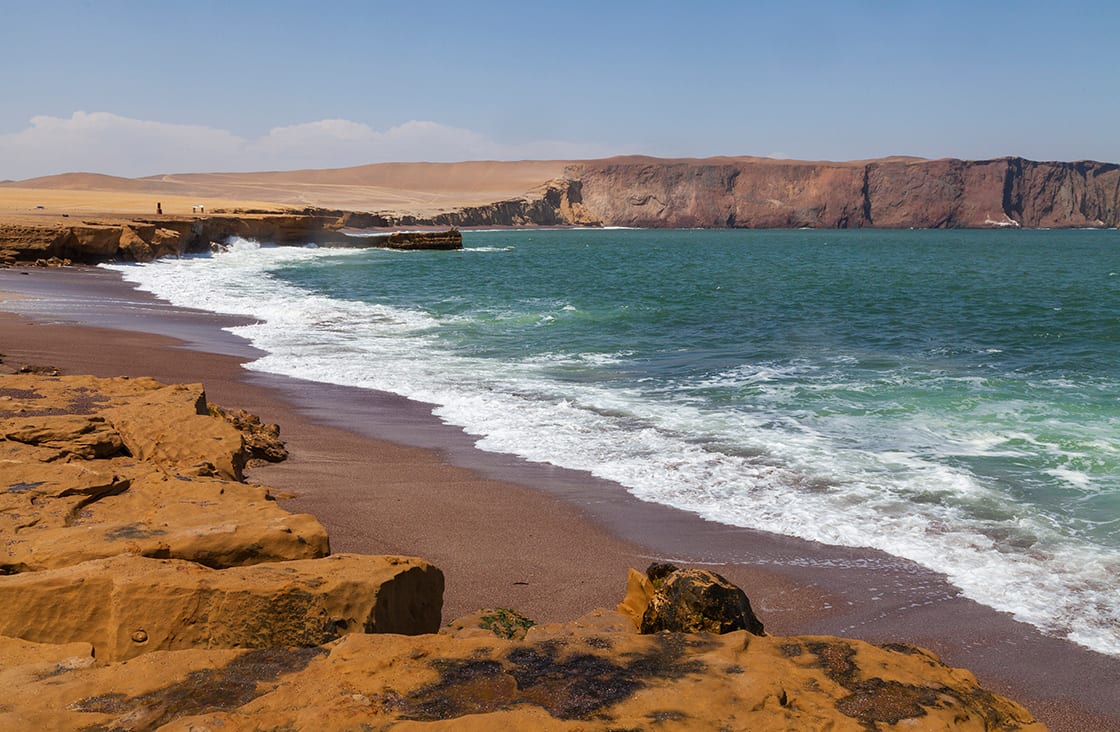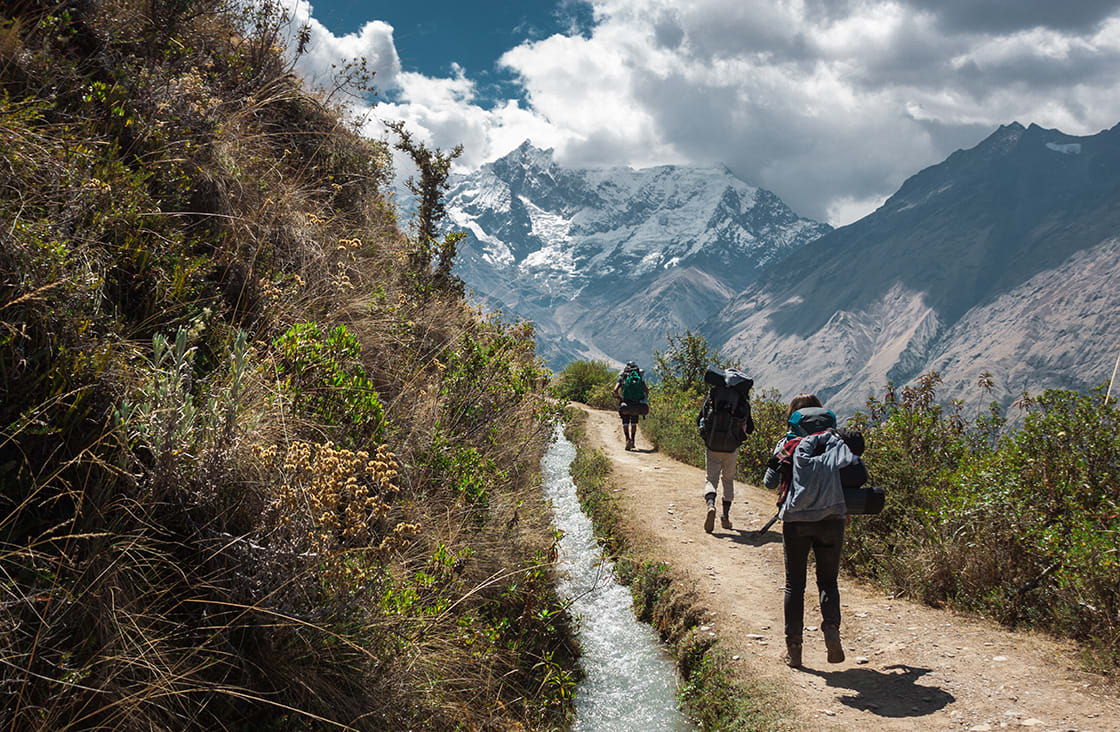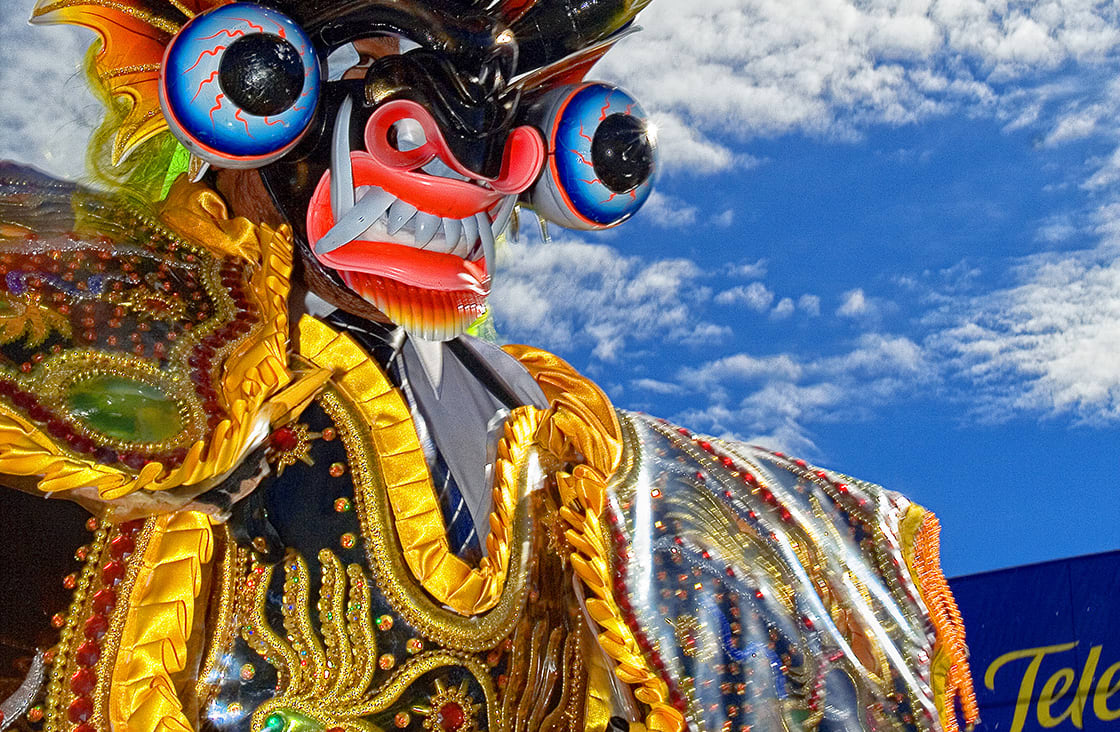
Iced-over mountains rearing past 20,000 feet, yawning and mist-clawed selva soundtracked by bellowing howler monkeys, ethereal desert hills easing down to the surf: Peru’s scenic variety can bowl you over. Throw in some magnificent historical architecture, wonderfully diverse culture, and among the world’s most legendary archaeological sites, and you’ve got quite the tantalizing stew.
But when’s actually the best time to visit Peru? As with so many tourist destinations, there’s not necessarily a cut-and-tried answer. There’s certainly a prime tourism window with the easiest access and most auspicious weather, but travelers keen to ditch some of the crowds—or enticed by experiences better had in other corners of the calendar—may schedule their Peruvian odyssey outside of it. Let’s dig into the issue, shall we? And to set the stage, let’s kick off with a bit of relevant climatic context.

Aguas Calientes, Machu Picchu – Peru
Peru lies wholly within the tropics, but that doesn’t mean the country’s uniformly hot and humid, or indeed that the year-round climate is unvarying. After all, this is a land of tremendous topographic diversity, with the coastal plain of the west and the steaming rainforest lowlands of the east separated by the skyscraping ramparts of the Andes.
The alpine crest of the Peruvian Andes and the great highland plateau of the Altiplano in the south help dictate climate patterns; their significant elevation also broadly means cooler temperatures than you’d otherwise associate with the tropical zone. Other important climatic influences in Peru include the cold, north-flowing Humboldt Current just offshore as well as the southern Pacific’s subtropical high-pressure system, plus the moist airmasses of vast Amazonia.
The basic picture is this: Peru experiences a “winter” dry season from May to October, and a “summer” wet/rainy season from November to April. But the three major physiographic realms of Peru—the coastal plain (or Costa), the Andean highlands (aka Sierra), and the Amazon Basin (Amazonia)—experience their own regional variations. The dry-vs.-wet-season distinction is most applicable in the Andean highlands and to Amazonia (though “dry” there is definitely relative); meanwhile, the summer-vs.-winter temperature differential is generally more of a factor in the Costa and Sierra zones.

Dunes and Cliffs, Paracas National Reserve
The Costa is part of the super-dry coastal plain of western South America, an aridity created by the interacting factors of dry Pacific airmasses, the cold nearshore current, and the blocking effect of the Andes with respect to Amazonian moisture. The northern coast is generally warmer given its nearness to the Equator: Summer temperatures there may reach the 90s (Fahrenheit). Overall, though, the Costa sees average summer temperatures generally in the 70s. In winter, expect daytime highs in the 60s, and frequent incursions of the fog known as garúa. While rainfall’s low year-round on the coast, the garúa does provide important wintertime moisture for vegetation.
The Andean highlands receive higher rainfall in the north and along their eastern front, with the most precipitation falling during the (surprise, surprise) rainy season. Expect frequent showers from November to March, with the wettest conditions usually in January and February. The winter dry season means less precipitation and clearer weather from April to October. Temperatures do vary throughout the year, but only modestly; generally speaking the bigger variation comes between the mild or warm days and the nippy nights.
The Peruvian Amazon claims a consistently hot, humid, and overall rainy year-round climate: a truly tropical setup where, again, the night/day temperature differential is more significant than seasonal ones. Temperatures in the 80s and 90s are the norm. Although rainfall’s generous all year, it’s a bit more significant between December and March.
In those rainforest lowlands, the more meaningful seasonal pattern from both the ecological and tourism standpoints is Peruvian Amazonia’s “high-water” season from December to May and the “low-water” season from June to December, with correspondingly raised or lowered river levels, respectively. Those fluctuations have less to do with the rainfall immediately over the Amazon Basin and more with precipitation patterns in the Andes affecting east-flowing drainages out of the highlands.
We’ve covered a lot of climatic nitty-gritty, but what does it all mean for the globe-hopper? When exactly (you may well be asking) is actually the best time to go to Peru? Well, the long and the short of it is that the winter dry season, with its predominantly sunny skies and balmy daytime temperatures, corresponds to the height of tourism season here. The bulk of visitors come between May and October, with peak crowds in July and August.
But the best time to travel to Peru depends on what you’re interested in doing, your personal preferences, and the realities of your own schedule. You can have incredible experiences in this gorgeous country anytime of year, no question: It’s all about knowing what to expect and embracing the special pleasures of each stretch of the calendar. Let’s drill down on some specific considerations!

The Way on Salkantay Trek, Perú
Although Machu Picchu and many other highland destinations are accessible in one form or another year-round, trekking definitely becomes more challenging during the summer wet season. Indeed, some roads and trails become downright impassable. Furthermore, the famed Inca Trail closes down in February. So if a Peruvian trekking adventure’s on your dream itinerary, aim for the dry season.

Spider Monkey in the Trees of the Amazon Rainforest
The jaguars, macaws, spider monkeys, and giant river otters of the Amazon, the spectacled bear of the cloud forest, the sea lions and penguins of the coast: Peru claims quite the roster of critters, and wildlife-watching is certainly possible year-round. That said, there are certainly seasonal patterns in this department as well.
For example, whale-watchers should aim for July to early November to goggle at the humpbacks that calve off the northern Peruvian coast (and which winter way down in Antarctica). Riverside wildlife viewing in the Amazon, meanwhile, is often most all-around productive during the “dry”/low-water season when animals are more likely to hug main river channels (though we’ll get into some subtleties on that subject shortly).

Costume of Devil, Candelaria Festival, Puno – Peru
From big cities to small villages, annual festivals in Peru provide a wonderful opportunity to sample local culture. There’s definitely a goodly number during the winter dry season’s peak tourism time, including the well-known Inti Raymi—a traditional Incan festival honoring the sun god—around the June solstice. But “off-season” travelers have other happenings to take in, not least the utterly spectacular Candelaria festival in Puno on Lake Titicaca, a dazzlement of costumery, dancing, music, and feasting in honor of the Virgen de la Candelaria.

River crising in Pacaya Samiria Natural Reserve, Iquitos – Peru
River trips in the Peruvian Amazon—definite bucket-list material, to say the least—deliver magic year-round, with different experiences depending on which of the two main seasons you choose. During low-water season from June to December, you can expect (as we mentioned) boosted numbers of wildlife along the riverbanks, fewer mosquitos, better fishing, and foot access to rainforest trails flooded the rest of the year.
Rivergoers in high-water season, meanwhile, can explore more extensively by boat, foraying up swollen tributaries and into flooded forest otherwise effectively inaccessible. The ability to cruise deeper into rainforest backwaters can make for rich opportunities for wildlife-watching even with generally lower concentrations of animals hugging the waterways.
From Lima to Machu Picchu to the Nazca Lines, expect greater crowds in Peru during the winter/dry season, particularly in July and August. Yet fine “shoulder-season” weather often exists in, say, April and October, there to be enjoyed with fewer people. And despite the summer/rainy season’s cloudiness, frequent deluges, and restricted access in the highlands, visitors during this “off-season” can marvel at vibrant lushness while enjoying warmer nighttime temperatures and a lot more elbow room (though there is some burgeoned tourism around the traditional winter holiday season).
Many travelers to Peru—especially first-timers—will opt to visit during the winter dry season, for good reason. But from high-water river touring in Amazonia to Cuzco’s holiday market, plenty during other times of year beckon the prepared tourist as well.
While Rainforest Cruises aim to provide accurate and up-to-date information, we make no representations as to the accuracy or completeness of any information herein or found by following any link on this site. Rainforest Cruises cannot and will not accept responsibility for any omissions or inaccuracies, or for any consequences arising therefrom, including any losses, injuries, or damages resulting from the display or use of this information.




